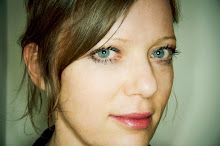STATE OF SPACE – Anne Katrine Senstad
30 August – September 9, 2013
Opening reception Friday Aug 30th @ 7pm
SALT (Saltarelli Salong)
Curated by Bjørn Hatterud
Møllergt 37
0179 Oslo, Norway
www.saltarelli.no
For more information please
contact:
Saltarelli Prosjektrom: saltarellioslo@gmail.com
Curator Bjørn Hatterud: megaeldar@gmail.com
Curator Bjørn Hatterud: megaeldar@gmail.com
STATE OF SPACE by Bjørn Hatterud,
Curator
Anne Katrine Senstad has worked in a wide
range of artistic expression in her practice. She has produced portrait
photography, site specific installations in nature, projected films and light
onto public buildings and made a series of surreal films.
Throughout her career she has focused on
the intersection of nature and culture, the object and the perception of
object, of rationality and the subconscious.
In State of Space she combines all of these areas of interest in a collection of her
works . And what is the state of space in Senstad’s art? What is the purpose of
“space” here in her art?
I find a theoretical key for the
understanding of the works of Senstad in, of all places, culture studies. One
of the theories that are frequently in use in culture studies is named
space/place theory. This is a theory that sees the place as one potential
understanding of a space. What makes a place is how we physically use the
space, how we perceive space and the practice of it, how we construct space
through language and fill it with objects, history and meaning. A space might be inhabited with a
selection of definitions of place at various moments in time. Simultaneously
the same space might be perceived as different senses of place according to the
subjective perceiver. This game of perception is used by Senstad in State of
Space, a collection of works shown in the space of a white
cube gallery.
The space of the white cube is normally
used to display objects. What Senstad is showing us are different works that
have the removal of the object as a theme. In Color Kinesthesia and Color Synthesthesia IV she shows us light
perceived as color. Small technically modifications in the perception can alter
even an empty space into a massively colored place.
In the same way she shows that a sculpture
is a three-dimensional object, obviously, but that this object not only fills
the space in the white cube. It also contains a space inside itself. By folding
out the sculpture she questions the function of the sculpture as a solid and
defining marker of a gallery space, a way of seeing sculptures that minimalism
taught us in the 1960s.
Her two small sculptures are replicas of a
larger sculptural piece, originally made to project color and light onto, which
would give the viewer an experience of colors in transit, light and reflected shapes in the art space.
This focus on the formal is what makes
Senstad’s art so interesting. Her aesthetics are close to minimalism,
monochromes and formalism. Her works might look slick and polished. They might
be seen as just another commentary on works of the modern and postmodern
genres.
This may be a conventional way of seeing
her work. But, her work is not a tongue in cheek commentary on modernism or
post-modernism classics. Senstad has an honest curiosity when she explores the
physics of space and philosophy of perception. Beneath the smooth surface her
art works deal with classical avant-garde questions: What is art? What is
space? How do we perceive the same objects and spaces differently at separate
times and with individual minds?
Senstad’s works owe more to 4’33” by John
Cage than to 60s minimalism, and more to Yves Klein and early experimental
post-modernism, than to clean formalism.
In this way Senstad’s works can be seen in
two distinctively different ways at the same time. On the surface there is
formalism. Beneath the surface there are some of the largest questions an
artist can dare to ask and to work with.
Senstad gives us two very different ways of
seeing her art. In this she creates variable potentialities from a singular
space. And between these multiple potential observations of her work, you will
find a space – a space where your perception is the guide.
Bjørn Hatterud is a curator, art critic,
writer and musician based in Oslo, Norway. He regularly writes criticism in
major nordic art press. His op-eds, essays and articles have been published in
more than twenty different journals, magazines, newspapers and books. As a
curator he has worked with artists such as Slava Mogutin, Bruce LaBruce, Zanele
Muholi and Maja Ratkje.





